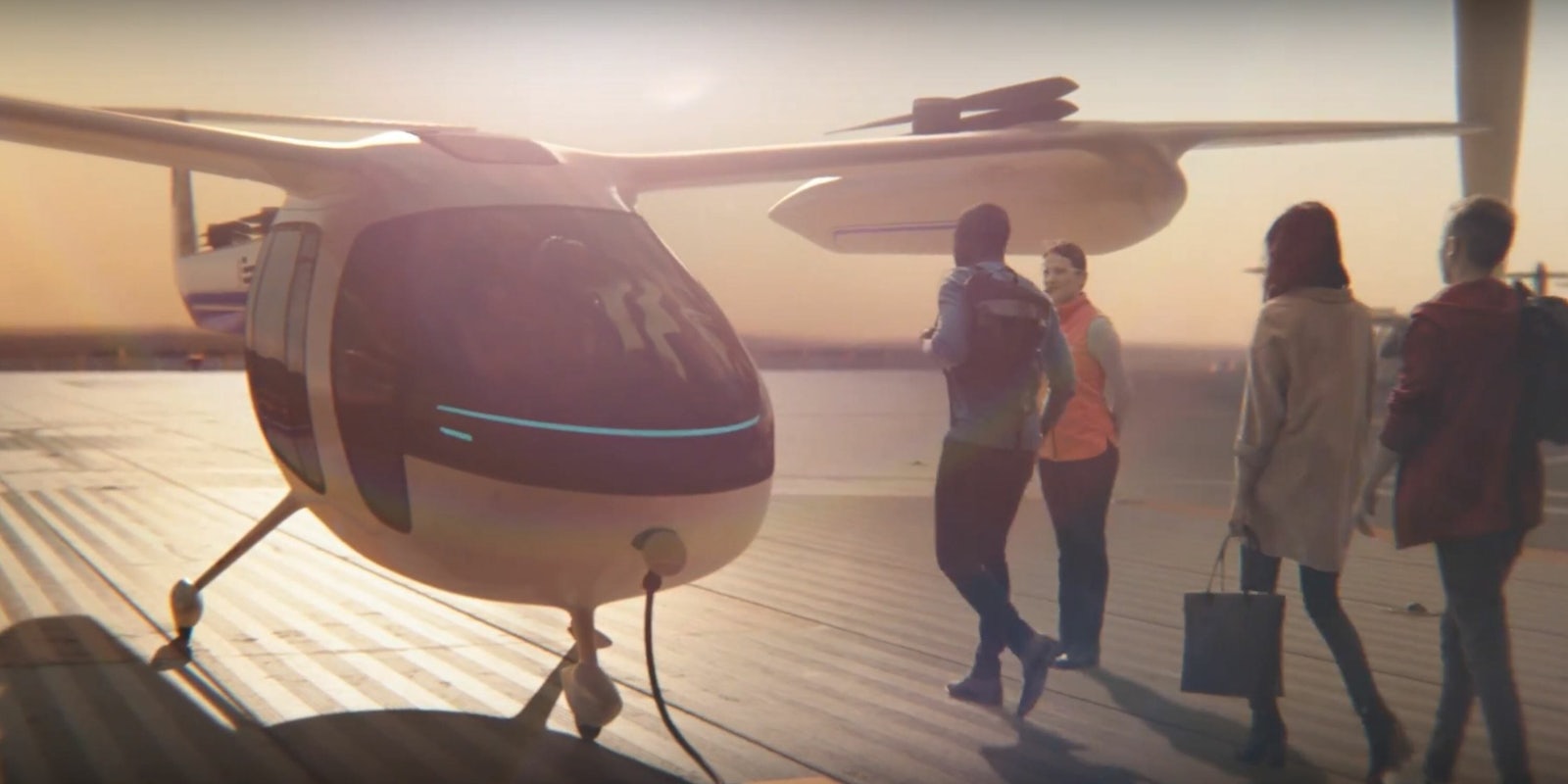Uber has had a rough time on the road of late, so maybe it will better luck in the sky.
The ride-hailing giant announced a partnership with NASA today to build a brand new air traffic control system that will manage low-altitude autonomous aerial vehicles. The two signed the Space Act Agreement at the Web Summit in Lisbon, Portugal, with the goal of making the concept of flying cars a viable mode of transportation by the turn of the century.
Uber’s head of product Jeff Holden also said the company wants to start testing flying vehicles by 2020 in Los Angeles, a city notorious for its congested highways. Uber says it will hold community meetings to listen to people’s concerns. It’s already partnered with a landlord to use its rooftops as launch pads. Los Angeles joins Dallas and Dubai as the first three cities to express interest in working with Uber’s Elevate program.
The beleaguered peer-to-peer car sharing company isn’t the only one pursuing this sci-fi fantasy. There are more than a dozen other companies developing flying cars, from multinational aerospace companies like Boeing and Airbus to startups like Aeromobil and Kitty Hawk. The ambitious vision isn’t without its detractors, including Elon Musk, who recently slammed the idea.
But Uber isn’t letting the outspoken Tesla CEO deflate its lofty plans.
“There’s been a great deal of progress that’s been hard to see from the outside, because a lot of this is just hard work at the drafting table,” Holden said, according to the Verge. “We feel really good. It’s been a really interesting process getting our vehicle manufacturing partners aligned on performance specifications, so that they’re building vehicles that align with what we need to make Elevate successful. So lots of good progress there.”
Uber first announced its Elevate project in a white paper last year. The aerial vehicles are meant to replace helicopters, which Uber says are too “noisy, inefficient, polluting, and expensive for mass-scale use.” Uber claims its flying vehicles will have zero operational emissions and will be quiet enough to fly around cities without disturbing neighbors. Daily long-distance commutes in dense urban areas are expected to take off (sorry) first because that’s where the most money and time can be saved. Regardless, the vehicles would not alleviate the need for traditional vehicles to transport passengers to and from the launch pads.
This all sounds very expensive, but Uber projects UberAir will cost the same as an Uber X ride. Uber even expects its flying vehicles will become less expensive than owning a car. A flight from San Francisco to San Jose on an Uber vertical takeoff and landing (VTOL) aircraft would take just 15 minutes compared to the 1 hour and 40 minutes it takes in a car during rush hour.
Don’t get your hopes too high, though. Uber has a lengthy list of “market feasibility barriers” it says must be solved before it can build its VTOL ecosystem. Some of those problems deal with engineering, like finding a battery with sufficient specific energy or building out the first commercially viable aircraft that uses distributed electric propulsion for vertical takeoff. Other issues include cost, zoning regulations, air traffic control systems, safety, emissions, and noise pollution.
If it can solve those problems, the future of transportation might look a lot like this rather creepy utopian promo video Uber released today.
Editor’s note: This article has been updated for clarity.
H/T the Verge


